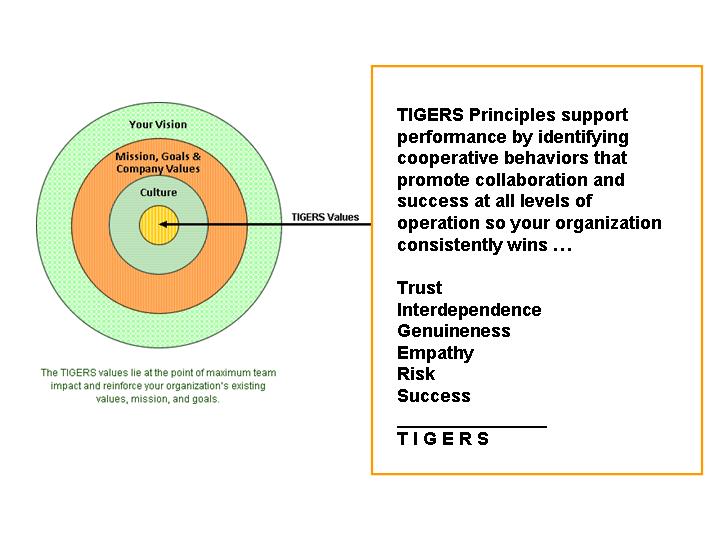
Risk, by definition, is taking an action that can result in a mistake that leads to loss or injury. It is also taking actions that result in growth and learning. Therefore, the flip side of risk is reward and those organizations with a high risk tolerance are more apt to innovate, learn and grow.
It is fear of risk that results in stagnation producing resistance to change and stubborn resolve to maintain the status quo. Leaders who embrace risk and who have acquired skills and strategies to minimize loss and injury through effective problem solving, decision making and planning, are most prepared to guide their organizations through change and in developing innovations. These are the leaders best equipped to create a culture of innovation. This is an ideal based on the idea that risk that results in learning and improvement is good for the company, employees, customers, stakeholders, vendors and communities.
In an ever-changing work environment, sustainable organizations require innovative solutions to problems and product improvements to stay in the game. While past practices are backed by research and proven solutions won through trial-and-error, innovation is just as important. This is because customers, their needs, technology and several other key workplace factors are constantly changing, which affects an organization’s inner-workings and the ability to learn about itself. The ability to keep up and adapt with the changing work environment is necessary to remain relevant in the marketplace. When employees are excited and passionate about solving problems that impact their roles and job security, they are more likely to champion innovative solutions.
So how do you start? What are four requirements that lead to creating a culture of innovation?
Determine culture resilience.
Assessing your company’s culture for innovation resilience is the first step in creating a culture of innovation. A few questions to explore include:
- Are people penalized for making mistakes?
- What is the process of bringing improvement ideas forward?
- How are improvement ideas received and handled by Department Managers?
- How are improvement ideas received and handled by the Executive Team?
- Is there root cause problem solving in place?
- Are employees empowered to make decisions that impact their level of business in the company and on behalf of a customer?
- Is training and learning part of the culture?
- Is employee development and learning new skills encouraged?
- How does planning occur in the organization?
- Do senior leaders understand the principles of effective facilitation?
Without first focusing on innovation resilience within the culture, you cannot hope to execute innovative ideas and strategies. Unless innovation is a culture priority that is understood by employees, efforts to innovate will not be successful. Innovation requires that employees work together to solve complex problems. As long as department functioning exist in silos, employees are penalized for making mistakes, managers ignore or intimidate employees for bringing their suggestions forward and employee learning and development is ignored innovation will not fly. The culture will not support it. To learn how to develop cross functional teams to solve complex organizational problems that can lead to innovative solutions, visit the TIGERS 6 Principles Problem Solving Clinic. We bring the training to you when 5 or more members of your organization are enrolled.
 Find a problem you are passionate about solving.
Find a problem you are passionate about solving.
Innovation is not a buzz word that leaders can throw around and expect results. In order to encourage innovation, find a problem that executives are passionate about solving. Perhaps high turnover has created a revenue sieve. Then get employees excited about solving the problem, too. If the problem produces high costs that drain revenue, consider rewarding employees who solve it with cost saving bonuses. The bottom line is that keaders promote and encourage innovation by modeling good problem solving themselves. When managers and employees are empowered to find solutions to a common problem that affects them directly, the more likely they will be excited about expanding the process to discover non-traditional solutions. And once they are passionate about the cause, then they can inspire passion in their team members to champion solutions.
Assess your capital.
On top of a culture that promotes innovation as a priority, organizations also need investment capital or growth reserves and the right combination of entrepreneurial-minded employees with risk tolerance and the skills to facilitate problem solving that takes into consideration group dynamics and strong group norms. Capital is needed to perform research, implement solutions and track progress. The innovation team requires good facilitators to help them develop ideas, monitor group dynamics and to bring their ideas to life. This is something managers learn how to do during phase two TIGERS licensing.
Make innovation a priority.
One of the most difficult aspects of creating an innovative culture is finding the time for innovation. Leaders are often bogged down by management issues, staff meetings and other daily tasks, leaving them little time for innovation. To find the time to innovate, redistribution of workloads requires planning. This means first identifying tasks that are unnecessary and eating up a lot of time. Decide if these tasks need to be dropped, delegated or reduced. Perhaps these tasks could be given to a leadership trainee or person who is being cross-trained in the position. Then leaders need to identify the essential tasks that they perform regularly, and maintain these tasks as a priority. By doing this, leaders will then create time that they can allocate toward new ideas and problem solving tasks.
Innovation is important for companies to remain competitive in changing markets. Understanding culture resilience, starting with problems that save revenue that people are passionate about, building the right team and making innovation a priority are required to build a culture of innovation that solves pressing problems and keeps the company moving forward with changing times.
Here are some additional resources that support this conversation further:
- How Innovation Became A Whim
- The 6 Principles Innovation Problem Solving Clinic
- TIGERS Among Us – Winning business Team Cultures and Why They Thrive
- Can Innovation Save 1.3 Million Lives Each Year?
- What’s Wrong With America’s Business Model For Innovation And Entrepreneurship?
- How to Make Time to Work on Your Biggest Ideas
- TIGERS Facilitation Licensee Training
Copyright TIGERS Success Series, Inc. by Dianne Crampton
 About TIGERS® Success Series, Inc.
About TIGERS® Success Series, Inc.
TIGERS® Success Series is a Bend, Oregon Leadership and Team Improvement Consultant that helps committed leaders build more cooperation among employees and collaboration between departments for improved growth, revenue, purpose and impact.
We do this by deploying the TIGERS® team process that improves workforce behaviors that are anchored by trust, interdependence, genuineness, empathy, risk resolution and success. Providing diagnostics and customized team interventions, you can improve both work culture and transform your adequate teams into exceptional ones.
We also license and train HRD Executives, Project Managers, Managers, Trainers and Team Consultants in the use of our award winning resources. It takes a tribe to improve the world of work for millions of employees globally. For more information, call 1+ 541-385-7465.

